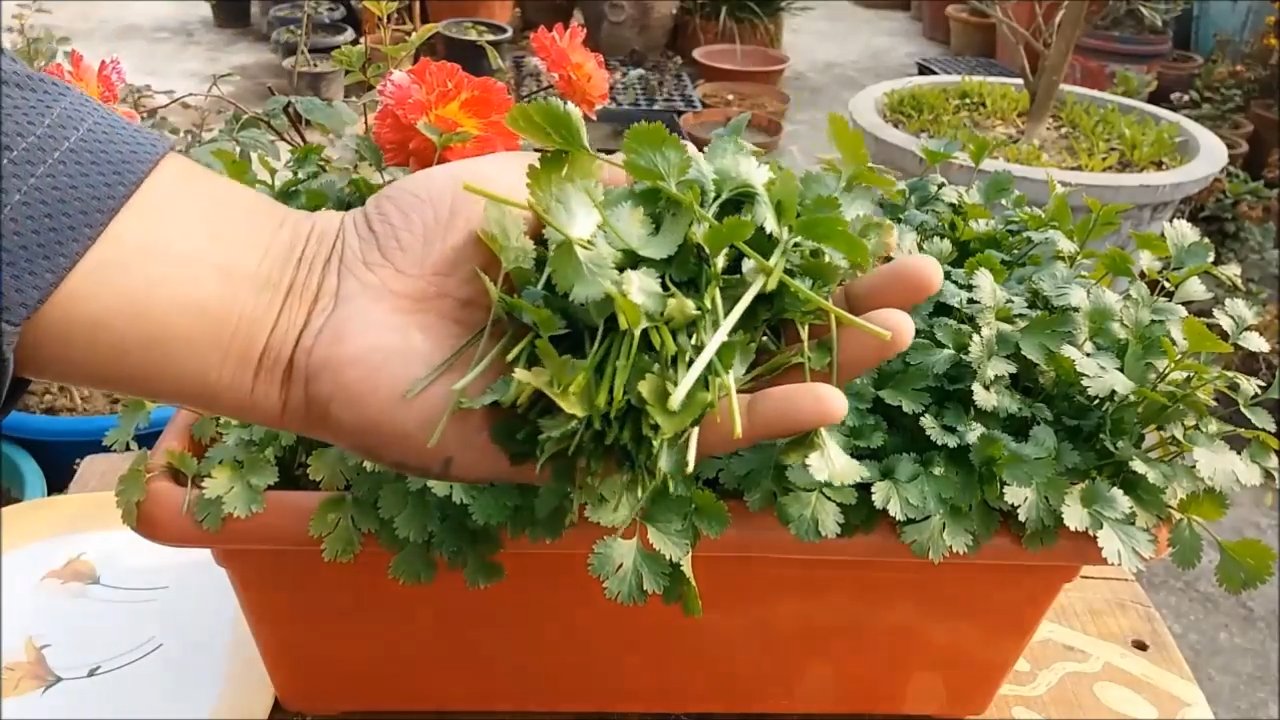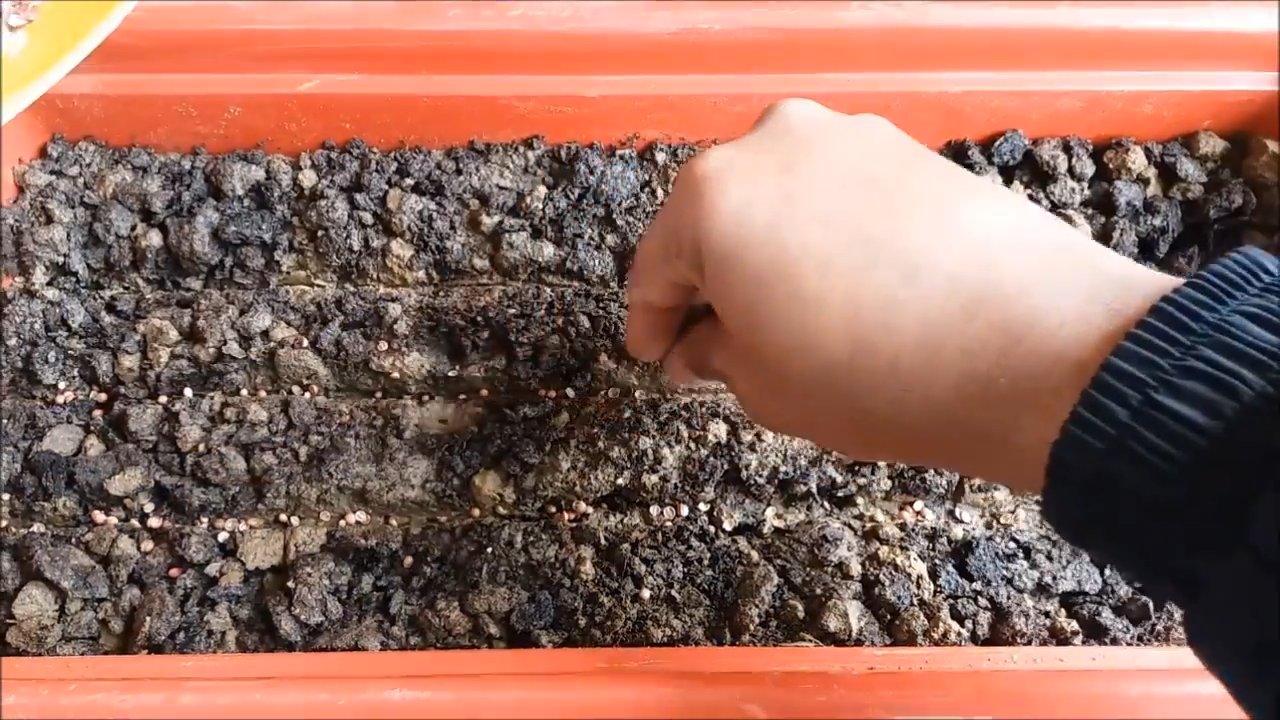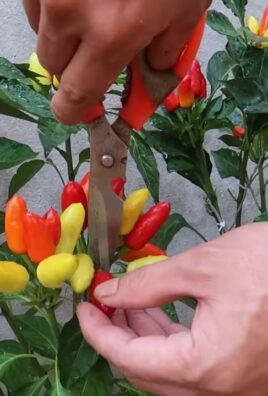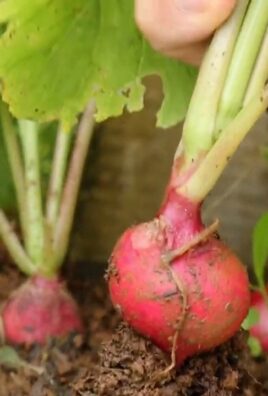Grow Cilantro Indoors? Absolutely! Imagine having fresh, vibrant cilantro at your fingertips, ready to elevate your culinary creations, no matter the season. Forget those sad, wilted bunches from the grocery store – with a few simple tricks, you can cultivate your own thriving cilantro patch right inside your home.
Cilantro, also known as coriander leaves, has a rich history, dating back to ancient Egypt, where it was used for medicinal purposes and even found in tombs! Its bright, citrusy flavor has made it a staple in cuisines worldwide, from Mexican salsas to Southeast Asian curries. But let’s face it, buying cilantro can be frustrating. It often goes bad quickly, and you might only need a small amount for a recipe. That’s where the magic of indoor gardening comes in!
This DIY guide is your passport to a constant supply of fresh cilantro. I’ll walk you through everything you need to know, from choosing the right container and soil to providing the perfect amount of light and water. You’ll discover easy-to-follow techniques and clever hacks that will help you grow cilantro indoors successfully, even if you don’t have a green thumb. Say goodbye to wasted herbs and hello to flavorful, home-grown goodness!

Growing Cilantro Indoors: A Beginner’s Guide
Hey there, fellow plant enthusiasts! Ever crave fresh cilantro in the middle of winter, or just want a constant supply for your tacos? Well, you’re in luck! Growing cilantro indoors is totally doable, and I’m here to walk you through the whole process. It’s easier than you might think, and the reward of having fresh herbs at your fingertips is totally worth it.
Choosing the Right Cilantro Variety
Not all cilantro is created equal, especially when it comes to indoor growing. Some varieties are more bolt-resistant (meaning they’re less likely to go to seed quickly), which is crucial for a continuous harvest.
* Slow-bolt Varieties: Look for varieties like ‘Slow Bolt’, ‘Santo’, or ‘Leisure’. These are specifically bred to resist bolting, giving you a longer harvest period.
* Compact Varieties: While not essential, compact varieties can be beneficial if you’re short on space. They tend to stay smaller and bushier.
Gathering Your Supplies
Before we dive into planting, let’s make sure you have everything you need. This will make the whole process smoother and more enjoyable.
* Seeds: Obviously! Choose a slow-bolt variety for the best results. You can find cilantro seeds at most garden centers or online.
* Pot: A pot that’s at least 6 inches deep and wide is ideal. Cilantro has a taproot, so it needs some space to grow downwards. Make sure it has drainage holes!
* Potting Mix: Use a well-draining potting mix. Avoid using garden soil, as it can become compacted and doesn’t drain well in containers.
* Grow Lights (Optional but Recommended): While cilantro can grow near a sunny window, grow lights will significantly improve your success, especially during the darker months.
* Watering Can or Spray Bottle: For gentle watering.
* Small Shovel or Spoon: For planting the seeds.
* Fertilizer (Optional): A balanced liquid fertilizer can help boost growth, but it’s not essential.
Planting Your Cilantro Seeds
Okay, let’s get our hands dirty! This is the fun part.
1. Prepare the Pot: Fill your pot with the potting mix, leaving about an inch of space at the top. Gently pat down the soil to remove any large air pockets.
2. Sow the Seeds: Cilantro seeds are actually small fruits containing two seeds each. You can either crush them gently before planting to improve germination or plant them whole. I usually crush them gently between my fingers. Sow the seeds about 1/4 to 1/2 inch deep and about 1-2 inches apart. You can plant several seeds in the same pot for a fuller harvest.
3. Water Gently: Water the soil gently until it’s evenly moist but not soggy. A spray bottle is great for this.
4. Provide Light: Place the pot in a sunny location that receives at least 6 hours of direct sunlight per day. If you’re using grow lights, position them a few inches above the pot and keep them on for 12-14 hours a day.
5. Maintain Moisture: Keep the soil consistently moist but not waterlogged. Check the soil moisture daily and water when the top inch feels dry.
Caring for Your Cilantro Plants
Now that your cilantro is planted, it’s time to nurture it and watch it grow!
1. Watering: As mentioned before, consistent moisture is key. Avoid letting the soil dry out completely, but also avoid overwatering, which can lead to root rot. I usually water every 2-3 days, depending on the temperature and humidity.
2. Light: Cilantro needs plenty of light to thrive. If you’re not using grow lights, rotate the pot regularly to ensure even growth. If your cilantro starts to look leggy (tall and spindly), it’s likely not getting enough light.
3. Temperature: Cilantro prefers cooler temperatures, ideally between 60-70°F (15-21°C). Avoid placing it near heat sources like radiators or vents.
4. Fertilizing (Optional): If you choose to fertilize, use a balanced liquid fertilizer diluted to half strength. Fertilize every 2-4 weeks during the growing season.
5. Pinching Back: Once your cilantro plants are a few inches tall, you can start pinching back the stems. This encourages bushier growth and delays bolting. Simply snip off the top inch or so of the stems.
6. Bolting Prevention: Bolting is when the plant starts to produce flowers and seeds, which can make the leaves taste bitter. To prevent bolting, keep the temperature cool, provide adequate moisture, and harvest regularly.
Harvesting Your Cilantro
The best part! Harvesting your cilantro encourages more growth and provides you with fresh herbs for your culinary creations.
1. When to Harvest: You can start harvesting cilantro leaves when the plants are about 6-8 inches tall.
2. How to Harvest: Use scissors or pruning shears to cut the stems about an inch above the soil. Avoid cutting more than one-third of the plant at a time, as this can stress it.
3. Harvesting Regularly: Regular harvesting is key to preventing bolting. Even if you don’t need the cilantro, pinch back the stems to encourage bushier growth.
4. Succession Planting: Cilantro is a short-lived herb, so it’s a good idea to sow new seeds every few weeks to ensure a continuous supply. This is called succession planting.
Troubleshooting Common Problems
Even with the best care, you might encounter some challenges when growing cilantro indoors. Here are some common problems and how to address them:
* Yellowing Leaves: This can be caused by overwatering, underwatering, or nutrient deficiencies. Check the soil moisture and adjust your watering accordingly. If you suspect a nutrient deficiency, try fertilizing with a balanced liquid fertilizer.
* Leggy Growth: This is usually a sign of insufficient light. Move your cilantro to a sunnier location or use grow lights.
* Bolting: As mentioned before, bolting is when the plant starts to produce flowers and seeds. To prevent bolting, keep the temperature cool, provide adequate moisture, and harvest regularly.
* Pests: Cilantro can be susceptible to pests like aphids and spider mites. Inspect your plants regularly and treat any infestations promptly with insecticidal soap or neem oil.
* Damping Off: This is a fungal disease that can affect seedlings. To prevent damping off, use a sterile potting mix, avoid overwatering, and provide good air circulation.
Extending Your Cilantro Harvest
Cilantro, as we know, can be a bit temperamental. Here are some extra tips to help you extend your harvest and enjoy fresh cilantro for longer:
* Cool Temperatures: Cilantro thrives in cooler temperatures. If your home is warm, try placing your cilantro in a cooler room or near a window that gets less direct sunlight.
* Adequate Air Circulation: Good air circulation helps prevent fungal diseases and keeps your cilantro healthy. Make sure your plants are not overcrowded and that there’s good airflow around them.
* Watering Technique: Water your cilantro at the base of the plant to avoid wetting the leaves, which can promote fungal growth.
* Harvesting Flowers: If your cilantro starts to bolt, you can still harvest the flowers! They have a similar flavor to the leaves and can be used in salads or as a garnish.
* Saving Seeds: If you let your cilantro bolt and produce seeds, you can save the seeds for future planting. Allow the seed heads to dry completely on the plant, then harvest the seeds and store them in a cool, dry place.
Enjoying Your Homegrown Cilantro
Now that you’ve successfully grown your own cilantro indoors, it’s time to enjoy the fruits (or rather, leaves!) of your labor. Here are some ideas for using your fresh cilantro:
* Tacos and Burritos: Cilantro is a classic topping for tacos and burritos.
* Salsa and Guacamole: Add fresh cilantro to your homemade salsa and guacamole for a burst of flavor.
* Soups and Stews: Cilantro can be used as a garnish for soups and stews.
* Salads: Add cilantro to your salads for a fresh, herbaceous flavor.
* Asian Cuisine: Cilantro is a common ingredient in many Asian dishes, such as pho and spring rolls.
* Pesto: Try making cilantro pesto for a unique and flavorful twist on traditional pesto.
Growing cilantro indoors is a rewarding experience that allows you to enjoy fresh herbs year-round. With a little bit of care and attention, you can have a thriving cilantro plant that provides you with a constant supply of delicious leaves. Happy gardening!

Conclusion
So, there you have it! Growing cilantro indoors is not only achievable, but it’s also a rewarding experience that brings fresh, vibrant flavor right to your fingertips. Forget those sad, wilted bunches from the grocery store that seem to lose their zest within days. With a little effort and the right conditions, you can have a constant supply of this beloved herb, ready to elevate your culinary creations.
Why is this DIY trick a must-try? Because it empowers you to control the quality and freshness of your cilantro. You’ll know exactly where it came from, how it was grown, and that it’s free from harmful pesticides. Plus, it’s incredibly satisfying to nurture a plant from seed to harvest, witnessing the magic of nature unfold in your own home. Imagine the pride you’ll feel when you sprinkle your homegrown cilantro on tacos, salads, soups, or any dish that calls for its bright, citrusy notes.
But the benefits don’t stop there. Growing cilantro indoors is also a sustainable choice. You’re reducing your reliance on commercially grown herbs that often travel long distances, contributing to carbon emissions. You’re also minimizing food waste, as you can harvest only what you need, when you need it.
Looking for variations? Consider experimenting with different cilantro varieties. ‘Santo’ cilantro is known for its slow-bolting properties, making it a great choice for indoor growing. You can also try growing cilantro in different types of containers, from terracotta pots to self-watering planters. If you have limited space, a vertical garden or hanging basket could be a perfect solution.
Another exciting variation is to companion plant your cilantro with other herbs or vegetables. Basil, parsley, and lettuce are all good companions for cilantro, as they share similar growing requirements. You can even plant cilantro alongside tomatoes or peppers, as it’s believed to deter certain pests.
Don’t be intimidated if you’ve never grown herbs indoors before. Cilantro is relatively easy to care for, and with a little attention, you’ll be enjoying fresh harvests in no time. Remember to provide plenty of sunlight, well-draining soil, and regular watering. And don’t forget to pinch off the flower buds to encourage leaf production.
We wholeheartedly encourage you to try this DIY trick and experience the joy of growing your own cilantro indoors. It’s a simple, affordable, and rewarding way to add fresh flavor to your meals and connect with nature.
Once you’ve embarked on your indoor cilantro growing journey, we’d love to hear about your experience! Share your tips, tricks, and photos with us in the comments below. Let’s create a community of indoor herb enthusiasts and inspire others to grow their own food. What are you waiting for? Get your seeds, soil, and pot ready, and let’s start growing some delicious cilantro! Remember, mastering the art of growing cilantro indoors is easier than you think.
Frequently Asked Questions (FAQ)
What kind of soil is best for growing cilantro indoors?
The best soil for growing cilantro indoors is a well-draining potting mix. Avoid using garden soil, as it can be too heavy and compact, leading to poor drainage and root rot. Look for a potting mix that contains ingredients like peat moss, perlite, and vermiculite, which will help to retain moisture while also providing good aeration. You can also amend your potting mix with compost or other organic matter to improve its fertility. A slightly acidic to neutral pH (around 6.0 to 7.0) is ideal for cilantro.
How much sunlight does indoor cilantro need?
Cilantro needs at least 6 hours of direct sunlight per day to thrive indoors. If you don’t have a sunny windowsill, you can supplement with artificial light. A fluorescent grow light or an LED grow light can provide the necessary light spectrum for healthy growth. Position the light a few inches above the plants and keep it on for 12-14 hours per day. Rotate the plants regularly to ensure that all sides receive adequate light. Insufficient light can lead to leggy growth and reduced flavor.
How often should I water my indoor cilantro?
Water your cilantro regularly, keeping the soil consistently moist but not waterlogged. Check the soil moisture by sticking your finger about an inch deep. If the soil feels dry, it’s time to water. Water thoroughly until the excess water drains out of the bottom of the pot. Avoid overwatering, as this can lead to root rot. During the warmer months, you may need to water more frequently than during the cooler months. Also, consider the type of pot you’re using. Terracotta pots tend to dry out faster than plastic pots.
Why is my cilantro bolting (going to seed)?
Bolting is a common problem with cilantro, especially in hot weather. When cilantro bolts, it stops producing leaves and starts to produce flowers and seeds. To prevent bolting, keep your cilantro cool and well-watered. Avoid exposing it to excessive heat or direct sunlight. Pinch off any flower buds as soon as you see them to encourage leaf production. You can also choose slow-bolting varieties of cilantro, such as ‘Santo’ or ‘Slow Bolt’. If your cilantro does bolt, you can still harvest the seeds, which are known as coriander.
How do I harvest cilantro leaves?
Harvest cilantro leaves when they are about 4-6 inches long. Use scissors or pruning shears to cut the stems near the base of the plant. Avoid cutting off more than one-third of the plant at a time, as this can stress the plant and reduce its growth. Regular harvesting will encourage the plant to produce more leaves. You can use the harvested leaves fresh or store them in the refrigerator for a few days.
Can I grow cilantro from seed indoors?
Yes, you can easily grow cilantro from seed indoors. Start by soaking the seeds in water for 24 hours to improve germination. Fill a pot with well-draining potting mix and sow the seeds about 1/4 inch deep. Water gently and keep the soil moist. The seeds should germinate in about 7-10 days. Once the seedlings have emerged, thin them out so that they are spaced about 2-3 inches apart. Provide plenty of sunlight and water regularly.
How long does it take to grow cilantro indoors?
It typically takes about 4-6 weeks to grow cilantro from seed to harvest indoors. The exact time will depend on the growing conditions, such as sunlight, temperature, and watering. With proper care, you can enjoy fresh cilantro leaves for several weeks or even months.
What are some common pests and diseases that affect indoor cilantro?
Common pests that can affect indoor cilantro include aphids, spider mites, and whiteflies. These pests can suck the sap from the leaves, causing them to become yellow and distorted. To control these pests, you can spray the plants with insecticidal soap or neem oil. Diseases that can affect indoor cilantro include powdery mildew and root rot. Powdery mildew is a fungal disease that causes a white, powdery coating on the leaves. Root rot is caused by overwatering and poor drainage. To prevent these diseases, provide good air circulation, avoid overwatering, and use well-draining soil.
Can I transplant cilantro seedlings outdoors?
Yes, you can transplant cilantro seedlings outdoors, but it’s important to do so carefully. Cilantro prefers cool weather, so the best time to transplant it is in the spring or fall. Choose a location that receives partial shade and has well-draining soil. Harden off the seedlings by gradually exposing them to outdoor conditions for a week before transplanting. Dig a hole that is slightly larger than the root ball and gently place the seedling in the hole. Water thoroughly and mulch around the plant to help retain moisture.
How do I store fresh cilantro?
To store fresh cilantro, trim the stems and place the bunch in a glass of water, like you would with flowers. Cover the leaves loosely with a plastic bag and store in the refrigerator. Change the water every day or two. This method will help to keep the cilantro fresh for up to a week. You can also freeze cilantro by chopping it up and placing it in ice cube trays with water or olive oil. Once frozen, transfer the cubes to a freezer bag.




Leave a Comment